|
Special Features





Image Libraries


|
|
Blog
Here we are. Donald Trump is America's president. The largest protest in American history greeted his first day. Welcome to Washington and the USA in 2017.
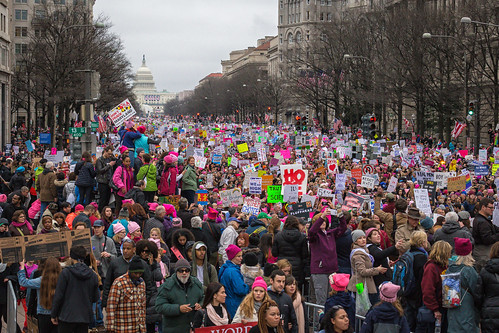
Saturday’s Women’s March. Image from Mobilus In Mobili on Flickr.
Our weekend was momentous
Two days, two gigantic events.
As inaugurations go, Friday's was noticably small. But even a small inauguration is big enough to change the tone of city life.
Security fences partitioned blocks of downtown, and an army of police forces dominated the streets. Many locals stayed away to avoid the logistical and emotional headaches. Parts of the city became eerily dead, while others burst with unusual life, as Trump supporters descended to hotels and tourist areas around the White House.
Washington became a foreign city, its own residents outsiders to a security and tourist project to which we didn't belong, nor feel healthy within.

Security barriers in an empty downtown.
During the inauguration itself, Metro ran smoothly. Trump presented a bleak picture of America. Protests raged, mostly peacefully, sometimes not. GGWash's own David Whitehead proved that deescalation works.
The new administration erased climate change from presidential priorities, and disciplined the National Park Service for reporting meager crowds. Joe Biden took Acela home to Delaware.
We went to bed, unsure the country we would wake to find.
And then, on Saturday, three times more people attended the Women's March than Friday's inauguration. Nationwide, at least three million took to the streets.
There was grief and humor and defiance. Mayor Bowser chanted "Leave us alone!, " DC police donned pink hats, and Metro had its second busiest day ever.
In contrast to Friday, Saturday's Washington felt more ours than ever. The city became strangely joyous, as march-goers spread over downtown and the National Mall to reclaim our public spaces, replacing the inauguration's fenced-off security apparatus with revelry lasting well into the evening.
We went to bed with renewed determination.
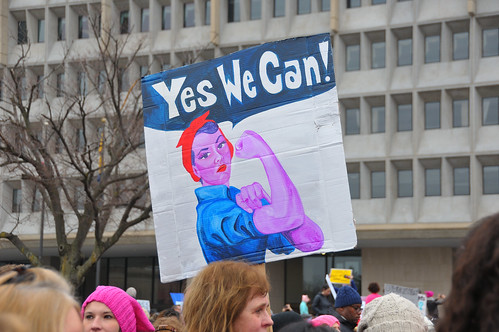
Image from Andrew Aliferis on Flickr.
Meanwhile, Donald Trump's press secretary brazenly lied, and his counselor hoped to replace the truth with "alternative facts" intended to sow uncertainty and estrange the media.
The policy fights are just beginning
Trump may be the most urban president in history, but his party and his base are vehemently anti-urban. Administration policy seems to be largely under the purview of Vice President Pence, whose small town Indiana roots are decidedly not urban.
They plan dramatic cuts to many federal departments, including the Department of Transportation, where multimodal infrastructure spending will likely decline in favor of tax breaks for construction firms. The Environmental Protection Agency is likely to be gutted, enabling a new round of urban pollution and ending the fight against climate change. HUD raised prices for first-time homebuyers within an hour of Trump's swearing-in. The Department of Justice will no longer pressure police departments over civil rights.
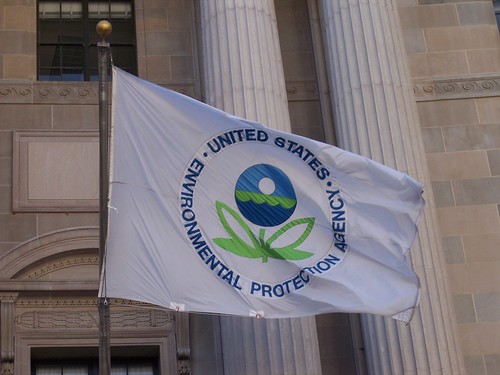
What will the EPA look like in four years? Image from Paul Fagan on Flickr.
Locally, such massive cuts and a proposal to strip benefits from government employees could throw Washington's economy into recession, as jobs bleed out of the city. Or security and military spending could lead to a new boom. Either way, Congress' small government Republicans will override local decision-making in DC.
Nationally, the right is emboldened, while the left is beginning to act like a true opposition.
So, here we are. Donald Trump is America's president. The future of our city and our country is uncertain. We face colossal challenges. But GGWash's mission and values are still worthwhile, and our community is as strong as ever. We'll be here.
 Comment on this at the version cross-posted to Greater Greater Washington. Comment on this at the version cross-posted to Greater Greater Washington.
Average Rating: 4.6 out of 5 based on 226 user reviews.
January 23rd, 2017 | Permalink
Tags: economy, environment, events, government, in general, metrorail, The New America, transportation

On June 11, Arlington closed a block of bustling Wilson Boulevard for what organizers called the Active Streets Festival. There were bike-oriented games and activities, plus a collection of temporary bikeways “built” with tape, paper, and potted plants.

Pop-up protected bikeway. Photo by BikeArlington.
The festival took place during the Air Force Association cycling race, when many Arlington streets were closed anyway. The Active Streets Festival gave Arlingtonians who weren’t racing something bike-related to take part in.
Planners “built” a series of temporary bike lanes, all on the block of Wilson Boulevard between Washington Boulevard and 10th Street North.
On one section, a row of potted plants formed the barrier for a protected bike lane. On another, a row of parked cars did the same. Elsewhere, washable homemade green “paint” and a thick roll of tape formed a green bike lane, a buffered bike lane, and sharrows.

Pop-up green lane and buffered bike lane. Photo by BikeArlington.
By using easy-to-set-up and easy-to-take-down temporary materials, Arlington planners tangibly showed residents what Wilson Boulevard might look like if its street space were allocated differently. There’s no proposal to change Wilson permanently, but the example can be instructive for future projects on other streets.

A BikeArlington worker lays down strips of tape to create the buffered bike lane. Photo by BikeArlington.
Tangible benefits aside, the whole thing was a heck of a lot of fun.

Wilson Boulevard with its pop-up bike lanes in place. Photo by BikeArlington.
 Comment on this at the version cross-posted to Greater Greater Washington. Comment on this at the version cross-posted to Greater Greater Washington.
Average Rating: 4.4 out of 5 based on 173 user reviews.
June 23rd, 2016 | Permalink
Tags: bike, events, transportation

The Crystal City Potomac Yard Transitway officially opened on Sunday, upgrading Metroway bus service to bona fide bus rapid transit in Arlington.

27th & Crystal station.
Metroway runs between Pentagon City and Braddock Road Metro stations. For much of its route, between Crystal City and Potomac Yard, it runs in dedicated bus lanes, making it the Washington region’s first real foray into BRT.
The Alexandria portion of the transitway opened in 2014. Arlington’s portion through Crystal City opened yesterday, Sunday, April 17.
Through Potomac Yard, the transitway runs in a totally exclusive busway—a completely separate road from the regular lanes.

27th & Crystal station.
Stations in the busway have substantial arched roofs and attractive wall panels.

South Glebe station.
Through Crystal City, bus lanes and bus stations hug the curb.

18th & Crystal station.
Since northbound buses run a block away from southbound buses, bus stations are smaller through this section. More like large bus stops.

23rd & Clark station.
Crystal City is pretty quiet on Sundays, so there weren’t many opening day riders and buses only came every 20 minutes. During the week there’ll be a lot more riders, and buses will run every 6-12 minutes depending on the time of day.
Head over to Crystal City and check it out! Or see more pictures of both the Arlington and Alexandria transitway sections via Flickr.
 Comment on this at the version cross-posted to Greater Greater Washington. Comment on this at the version cross-posted to Greater Greater Washington.
Average Rating: 4.4 out of 5 based on 168 user reviews.
April 18th, 2016 | Permalink
Tags: BRT, events, transportation

DC Streetcar is open and carrying passengers, following a festive opening day on Saturday. Enjoy this photo tour reliving the fun.

 Continue reading at Greater Greater Washington Continue reading at Greater Greater Washington
Average Rating: 4.8 out of 5 based on 174 user reviews.
February 29th, 2016 | Permalink
Tags: events, galleries, streetcar, transportation

DC Mayor Muriel Bowser just announced the H Street streetcar will officially open to passengers on Saturday, February 27. Of this year. Hallelujah!
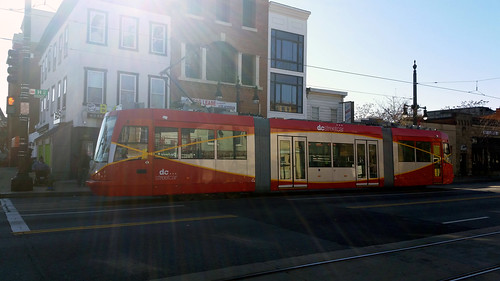
Mayor Bowser’s announcement should mean the DC fire department has certified the streetcar as safe to run and submitted its paperwork to the federal government, thus accomplishing the last step before the streetcar can open. With that done, it’s ready to carry passengers.
The opening party and first passenger-carrying run will take place at 10:00 am on Saturday, February 27, at the corner of H Street and 13th Street NE.
After that, streetcars will run between Union Station and Oklahoma Avenue every 15 minutes the rest of the day. Rides will be free for everyone for the first few months.
The streetcar will close again Sunday the 28th; for now it’s only scheduled to run six days per week. But passengers will be able to pick it up again on Monday the 29th, and every day thereafter except Sundays.
Many of us will be there to enjoy the festivities, and we’ll try to all meet up to make a GGWash contingent. Join us if you can! Or ride the streetcar to our 8th birthday party on March 8. Or both!
 Comment on this at the version cross-posted to Greater Greater Washington. Comment on this at the version cross-posted to Greater Greater Washington.
Average Rating: 4.6 out of 5 based on 184 user reviews.
February 18th, 2016 | Permalink
Tags: events, streetcar, transportation

Boston has backed out of its bid to host the 2024 Olympics, and officials are begging DC and other cities to try and host the games. But fewer and fewer cities want to. What if, instead of picking one host city, the entire country pitched in, with venues spread out in several cities coast to coast.

Don’t pick one. Pick them all. And add 10 more. Image by the USOC.
The Olympics have a big problem. Virtually no democratic cities anywhere in the world want to host them anymore. The combination of sky-high costs for new facilities, and the inconveniences put upon the populace by way of construction and tourist traffic, have made the Olympics too much for one city to bear.
But why should one city have to?
To save the Olympics, the FIFA World Cup offers a compelling alternate in which countries host instead of cities.

Brazilian host cities for the 2014 FIFA World Cup. Image from Wikipedia.
Different events would take place in different locations, hundreds or even thousands of miles apart. No single city would have to shoulder the burdens of more than one or two events.
With a whole country to choose from, organizers could find existing facilities for virtually every event. Much less new construction would be necessary. Many fewer one-time-use buildings would become abandoned after the games end.
And with fewer athletes and visitors in any one location, existing infrastructure and hotels could accommodate more of the influx of guests, with less disruption to residents. Hosting a single Olympic event would be more like hosting a college football bowl game, or the baseball All Star game.
In short, everything would become easier.
And although it’s true that some World Cups suffer from overspending too, certainly the problem is less acute when it’s spread over an entire nation.
The downside
This would admittedly be a drastic change to the culture of the games. It would be difficult for anyone to attend more than one event in person. Athletes would no longer live and socialize in a single Olympic Village. Something about the in-person experience of being in a city dedicated completely to the Olympics would be lost.
Without that complete dedication, it’s unlikely urban politicians would find the will to use the Olympics to upgrade infrastructure.
But that overwhelming experience is part of why so many cities don’t want to host the Olympics anymore. For residents whose lives are put on hold, it’s a bug, not a feature.
Meanwhile, the opening and closing ceremonies would still provide glimpses of that invigorating everyone’s-here feeling. It would be a trade-off, but perhaps a worthwhile one.
What role would DC play?
If Olympic officials spread the wealth/burden, what events might DC be fit to host?
A look at the possible venues for DC’s 2014 bid shows what facilities already exist, and therefore might be a good fit.
We probably wouldn’t get the opening ceremony. That needs an NFL-sized stadium, and our only options are either too old or too isolated. They’d work in a pinch, but some other US city can probably offer something more appealing.
Weightlifting could occur at Constitution Hall. The convention center could host table tennis, handball, or badminton.
The marathon could follow the path of the Marine Corps marathon. Rowers could set off from Georgetown.
And of course, the Verizon Center would be a killer spot for basketball. Or really any gym sport. How about gymnastics?
How would this change your opinion of the games? Would readers who oppose a DC Olympiad support a US games, with only one or two venues in DC?
 Comment on this at the version cross-posted to Greater Greater Washington. Comment on this at the version cross-posted to Greater Greater Washington.
Average Rating: 4.8 out of 5 based on 200 user reviews.
August 10th, 2015 | Permalink
Tags: events, in general, proposal

Maryland Governor Larry Hogan announced today the state will build the Purple Line.
Hogan announced his decision to build the light rail line at a press conference at 2:30 this afternoon.
To reduce costs, trains on the Purple Line will come every seven and half minutes rather than every six. The state will not change the alignment, nor the number or location of stations.
The Purple Line has been on the books for decades, and enjoys wide support in Maryland’s urban and suburban communities surrounding DC. It was primed to begin construction this year, but Governor Hogan has been threatening to cut it since entering office.
Our neighbors in Baltimore are not so lucky. At the same presser, Hogan announced the Baltimore Red Line will not move forward as currently conceived.
 Comment on this at the version cross-posted to Greater Greater Washington. Comment on this at the version cross-posted to Greater Greater Washington.
Average Rating: 4.5 out of 5 based on 292 user reviews.
June 25th, 2015 | Permalink
Tags: events, government, lightrail, transportation

Now that DC’s oft-delayed H Street streetcar is hopefully near opening, DDOT officials are planning the next wave of lines. One of the biggest emerging questions (besides the role of dedicated lanes) is where the streetcars should run without wires.

Current law prohibits wires under the Whitehurst Freeway. Should that change? Image from Google.
DC has important monumental views that wires could impact. Therefore, DDOT has been promising hybrid streetcars that can run off-wire for part of their route since 2009. It could mean wires along some roads but not at major intersections, crossing state avenues, or across the National Mall, for example.
DC Councilmember Mary Cheh is convening a public hearing today to discuss the question with District Department of Transportation (DDOT) officials including new director Leif Dormsjo.
Where wires are legal
Current DC law prohibits overhead wires in the central L’Enfant city (basically everything between Florida Avenue and the Anacostia River) and Georgetown, except on H Street. In 2010, the council exempted H Street from the law, specifically to permit streetcars there.
But only exempting H Street was never a permanent solution. It was a stopgap to let H Street move forward while giving DDOT time to study wire-free planning in more detail. Now it’s time for a broader plan.

Wires on H Street.
Is wireless technology ready?
The 2010 law also required DDOT to study wireless streetcar technology before building any other lines, so leaders could make an informed decision about other exemptions.
DDOT completed that study in mid-2014, and in it concluded that off-wire technology is still only practical for short distances. Batteries, ground-based power supplies, and various other wire-free systems do exist, but they’re vastly more expensive and vastly less reliable than traditional overhead wires. Hybrid streetcars that operate on-wire part of the time, and off-wire at other times, remain by far the best option.
Moving forward, the DC Council could opt to change the wire law in one of four ways: 1) Keep the existing law allowing wires only outside the core; 2) Prohibit wires everywhere; 3) Allow wires everywhere; or 4) Allow wires in certain additional locations, but not others.
DDOT’s report proposes an approach in line with option 4:
In the near term, proven overhead contact system (OCS)-based technologies will form the basis of the system, with limited application of off-wire technologies in the most sensitive areas to the extent possible. As technologies advance, the amount of off-wire operations will be gradually increased.
This option makes sense. Most people agree that the north-south streetcar line should be wireless when it crosses the National Mall, but it would be absurd to demand the K Street line be wire-free when it runs under the Whitehurst Freeway.
Others worry that DDOT will not actually “gradually increase the amount of off-wire operations” once wires are in the ground. If DC buys streetcars that can handle only limited off-wire operation, it would cost money to upgrade, and that might not happen for a long time.
But wire-free technology still only works for short distances, so a hybrid is still the way to go. Modern streetcar wires can be relatively unobtrusive and won’t mar the streetscape. Allowing overhead wires in some other areas while prohibiting them in the most sensitive spots is the rational solution.
 Cross-posted at Greater Greater Washington. Cross-posted at Greater Greater Washington.
Average Rating: 4.5 out of 5 based on 163 user reviews.
February 4th, 2015 | Permalink
Tags: events, preservation, streetcar, transportation

Is there an urbanist in your life? Of course there is; you’re reading this blog. Here are a bunch of great gift ideas to satisfy your favorite urban geek, or maybe add to your own wish list.
 |
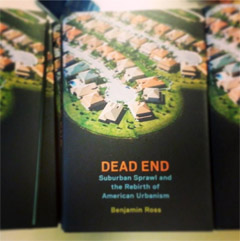 |
| DC streetcar holiday cards from Analog, and Ben Ross’ book Dead End. |
There are tons of great genre gifts available in stores and online. But special mention goes out to two that come from members of our own urbanist blogging community:
Ben Ross’ book Dead End
Ben Ross is a frequent GGW contributor and a prolific author. His book Dead End: Suburban Sprawl and the Rebirth of American Urbanism is perhaps the most cogent explanation ever written about the motivations of community activists. Dead End is $26 new from Amazon.
DC streetcar greeting cards
Get your correspondence on with DC streetcar themed Christmas cards, which my wife Melissa makes for her Brookland store Analog. A set of 8 cards is $14, available online, at the shop, or at upcoming pop-up markets in Rosslyn and Silver Spring.
More great options
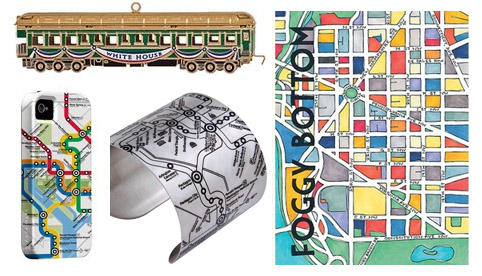
White house tree ornament, Metro map phone case and bracelet, DC neighborhood wall art.
This year’s White House Christmas tree ornament is an old style train ($24).
Local graphic designer Cherry Blossom Creative makes a series of colorful DC neighborhood wall prints ($20).
WMATA has an official DC Metro Store that sells a wide variety of Metro-themed products, including iPhone cases ($39), bracelets ($32), mugs ($12), model buses ($35), and more. Or if you’re looking for something more functional, how about a SmarTrip card loaded with fare money.
Still need more? Everything from last year’s gift guide would still work, Urbanful has an extensive marketplace, and Etsy is filled with DC-themed gifts.
COPY ONTO BDC
 Cross-posted at Greater Greater Washington. Cross-posted at Greater Greater Washington.
COPY ONTO GGW
 Cross-posted at BeyondDC. Cross-posted at BeyondDC.
Average Rating: 4.8 out of 5 based on 194 user reviews.
December 10th, 2014 | Permalink
Tags: events, in general

In case anyone is wondering, as an Arlington employee it’s not prudent for me to blog about the Arlington County board’s decision to cancel the Columbia Pike and Crystal City streetcars.
Greater Greater Washington has excellent coverage of the issue, though.
Average Rating: 4.5 out of 5 based on 223 user reviews.
November 21st, 2014 | Permalink
Tags: events, government, streetcar, transportation

|
Media





Site
About BeyondDC
Archive 2003-06
Contact
Category Tags:
Partners
|




 Comment on this at the version cross-posted to Greater Greater Washington.
Comment on this at the version cross-posted to Greater Greater Washington.































